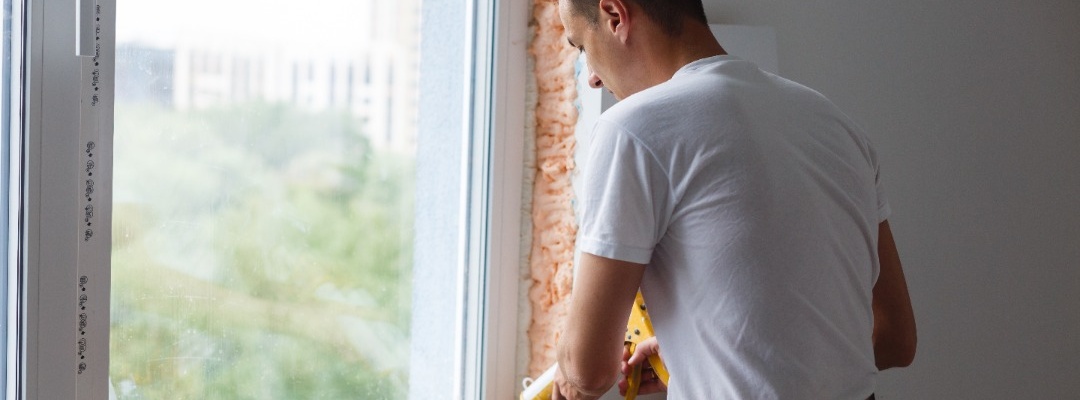Replacing a window is a typical home improvement project that can enhance your living space’s functionality, energy efficiency, and aesthetic appeal. However, before embarking on this endeavor, it’s essential to understand the time it may take to complete the process. In this article, we will delve into the various factors that influence the duration of window replacement, the step-by-step process involved, and average timeframes to help you plan your project effectively.
Understanding the Basics of Window Replacement
Window replacement refers to removing an existing window and installing a new one. It is typically undertaken to address issues such as poor insulation, draftiness, damage, or outdated design. By replacing your windows, you can improve energy efficiency, reduce noise infiltration, enhance security, and uplift the overall appearance of your home.
When it comes to window replacement, there are various options to consider. Depending on your specific needs and preferences, you can choose from different types of windows, such as double-hung, casement, sliding, or picture windows. Each type of window offers unique benefits and features, so it’s essential to understand the differences before deciding.
What is Window Replacement?
Window replacement is the process of removing an old window and installing a new one. It involves assessing the condition of the existing window, measuring the dimensions, ordering the new window, and then replacing it with precision and care.
Before starting the window replacement project, it’s crucial to evaluate the condition of your current windows. Look for signs of wear and tear, such as cracked glass, rotting frames, or difficulty opening and closing. These issues can indicate the need for replacement.
Once you’ve determined that window replacement is necessary, measuring the dimensions accurately is essential. Proper measurements ensure the new window will fit perfectly, preventing gaps or leaks. Hiring a professional for precise measurements is recommended to avoid any errors.
After measuring, the next step is to order the new window. You can choose from various materials, including vinyl, wood, fiberglass, or aluminum. Each material has advantages and disadvantages, so it’s essential to consider factors such as durability, maintenance, and cost when deciding.
Finally, the replacement process involves removing the old window carefully and installing the new one. This step requires expertise to ensure proper insulation, weatherproofing, and a secure fit. Hiring a professional window installer can help ensure a seamless and efficient replacement process.
Why Might You Need to Replace a Window?
Several factors can necessitate window replacement. These include functionality issues such as air leakage, water infiltration, or difficulty in opening and closing the window. Upgrading your windows can also improve energy efficiency, reduce noise, and enhance curb appeal.
Poorly insulated windows can lead to significant energy loss and higher heating and cooling costs. You can reduce heat transfer and save energy bills by replacing your windows with energy-efficient options, such as double-pane or Low-E windows.
Noise infiltration can be a significant concern, especially if you live in a busy area or near a noisy street. Upgrading to windows with soundproofing features, such as laminated glass or multiple panes, can help reduce outside noise and create a quieter and more peaceful indoor environment.
In addition to functionality and energy efficiency, window replacement can also enhance the overall appearance of your home. Outdated or damaged windows can significantly affect the curb appeal and aesthetics. You can give it a fresh and modern look by choosing new windows that complement your home’s architectural style.
Furthermore, window replacement can also improve the security of your home. Older windows may have weak locks or frames, making them vulnerable to break-ins. Installing windows with advanced security features, such as reinforced glass or multi-point locking systems, can provide peace of mind and enhance your home’s safety.
Factors That Influence the Time It Takes to Replace a Window
The time it takes to replace a window can vary depending on several factors. Understanding these factors can help you better estimate your project’s required timeframe.
Type of Window
The type of window being replaced significantly impacts the duration of the replacement process. Different window types, such as double-hung, casement, or sliding windows, have distinct installation methods and complexities. For example, installing a specialty window, like a bay or bow window, may require additional time and expertise.
Size of the Window
Generally, larger windows take longer to replace than smaller ones. Installing larger windows involves more steps and requires additional handling, which can extend the overall timeframe.
Condition of the Existing Window Frame
The condition of the existing window frame is another crucial factor. If the structure is damaged or deteriorated, it may require repairs or replacement, adding extra time to the project. In some cases, installing a new window frame entirely may be necessary.
Weather Conditions
Weather conditions can impact the speed at which window replacement can be completed, especially for exterior installations. Severe weather, such as heavy rain or extreme temperatures, may delay specific steps, such as sealing and caulking, and potentially prolong the project.
The Window Replacement Process
The window replacement process involves several stages, each requiring attention to detail and expertise. Here’s a breakdown of the typical steps:
Initial Consultation and Measurement
The first step in the window replacement process is to consult with a professional window installer. They will assess your needs, evaluate your existing windows, and take measurements to determine the correct size for the replacement window. This stage ensures accuracy and helps streamline the subsequent steps.
Ordering and Delivery of the New Window
Once the measurements are taken, the replacement window is ordered from a reputable supplier. The delivery time can vary depending on the window type, customization options, and supplier availability. It is essential to consider this when planning your project.
The Actual Replacement Process
When the replacement window arrives, the installation process begins. This typically involves removing the old window, preparing the opening, inserting and aligning the new window, securing it in place, and carefully sealing any gaps to ensure weatherproofing and insulation. The precise steps may vary based on the window type, frame material, and specific installation requirements.
In conclusion, replacing a window depends on various factors such as window type, size, frame condition, and weather conditions. Understanding these factors and following a step-by-step process can help ensure a smooth and timely window replacement project. Consulting with a professional window installer will provide valuable insights specific to your project and help you make informed decisions. With careful planning and execution, your new windows will be installed efficiently, enhancing your home’s comfort, energy efficiency, and curb appeal.


